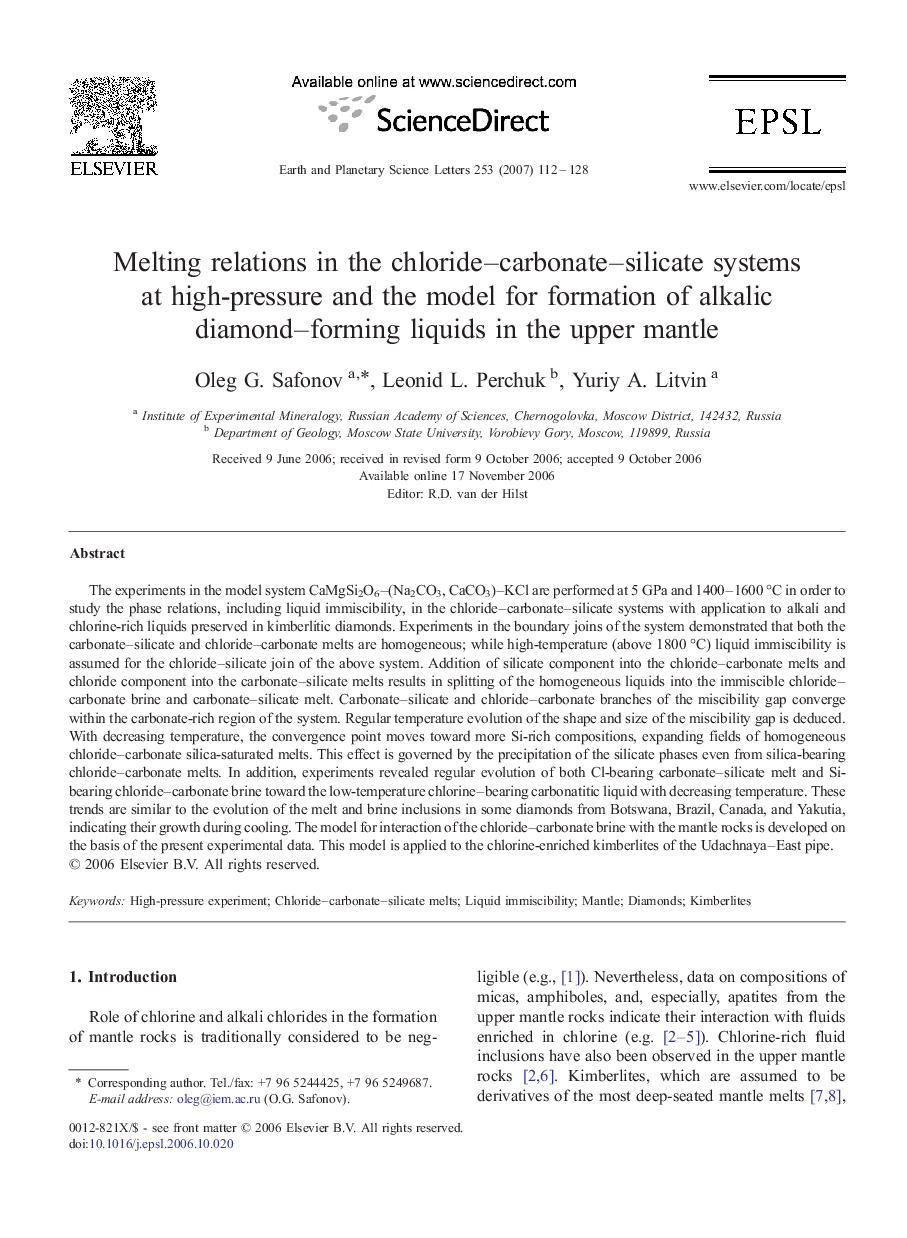| کد مقاله | کد نشریه | سال انتشار | مقاله انگلیسی | نسخه تمام متن |
|---|---|---|---|---|
| 4680622 | 1634929 | 2007 | 17 صفحه PDF | دانلود رایگان |

The experiments in the model system CaMgSi2O6–(Na2CO3, CaCO3)–KCl are performed at 5 GPa and 1400–1600 °C in order to study the phase relations, including liquid immiscibility, in the chloride–carbonate–silicate systems with application to alkali and chlorine-rich liquids preserved in kimberlitic diamonds. Experiments in the boundary joins of the system demonstrated that both the carbonate–silicate and chloride–carbonate melts are homogeneous; while high-temperature (above 1800 °C) liquid immiscibility is assumed for the chloride–silicate join of the above system. Addition of silicate component into the chloride–carbonate melts and chloride component into the carbonate–silicate melts results in splitting of the homogeneous liquids into the immiscible chloride–carbonate brine and carbonate–silicate melt. Carbonate–silicate and chloride–carbonate branches of the miscibility gap converge within the carbonate-rich region of the system. Regular temperature evolution of the shape and size of the miscibility gap is deduced. With decreasing temperature, the convergence point moves toward more Si-rich compositions, expanding fields of homogeneous chloride–carbonate silica-saturated melts. This effect is governed by the precipitation of the silicate phases even from silica-bearing chloride–carbonate melts. In addition, experiments revealed regular evolution of both Cl-bearing carbonate–silicate melt and Si-bearing chloride–carbonate brine toward the low-temperature chlorine–bearing carbonatitic liquid with decreasing temperature. These trends are similar to the evolution of the melt and brine inclusions in some diamonds from Botswana, Brazil, Canada, and Yakutia, indicating their growth during cooling. The model for interaction of the chloride–carbonate brine with the mantle rocks is developed on the basis of the present experimental data. This model is applied to the chlorine-enriched kimberlites of the Udachnaya–East pipe.
Journal: Earth and Planetary Science Letters - Volume 253, Issues 1–2, 15 January 2007, Pages 112–128